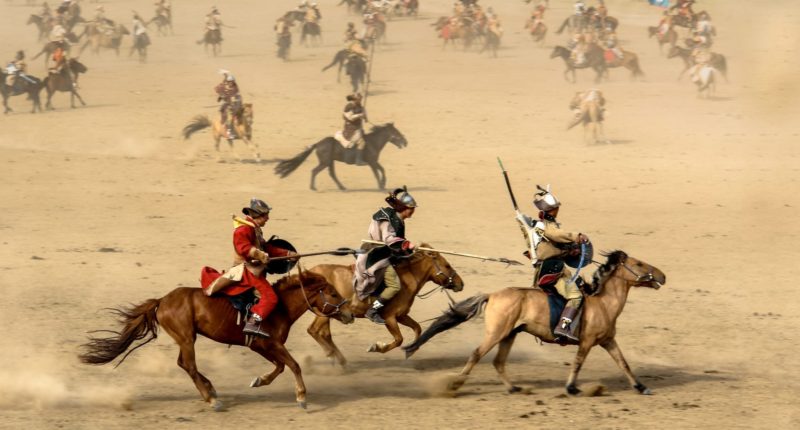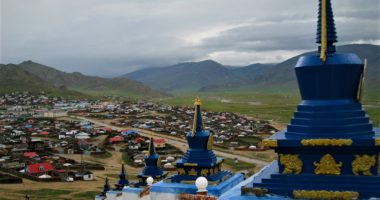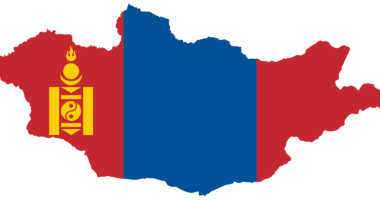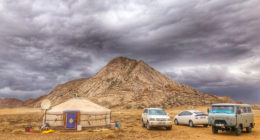The Hunnu State was also the first state which was formed among the nomadic people of central Asia. The Hunnu State was established in the year – 209 B.C. The Xianbei state ( c. 93–234 CE), the Rouran Khaganate (330–555), the First 552–603) and Second Turkic Khaganates (682–744) and others, ruled the area of present-day Mongolia. The Khitan people, who used a para-Mongolic language, founded an empire known as the Liao dynasty (916–1125) and ruled Mongolia and portions of the present-day Russian Far East, northern Korea, and North China.
Genghis Khan consolidated distinct nomadic tribes in 1206 and the concept of the Mongolian nation was assembled. Mongolian Empire was spread from Manchuria to the Caspian Sea by the time he died. Genghis Khan’s heirs kept on ruling the empire and enlarged the territory creating the greatest land empire ever existed. Then the empire gradually split into four parts ( Yuan Dynasty, Il-Khanate, Chagatai Khanate and Golden Horde), each of which was ruled by its own Khan.
In early twentieth century Mongolian’s allied with Soviet Union when China was having political riot, which was a great opportunity for Mongolian nationalists. Outer Mongolia officially became independent in 1924 announced as Mongolian People’s Republic (MPR), the world’s second communist country. The internal politics of MPR was massively influenced by Soviet Union as a puppet country, which had negative outcomes such as expels in the 1930s and involuntary collectivization. On the other hand, with investment from Soviet Union significant infrastructure was put in place and levels of education, healthcare and economic growth refined. However, Inner Mongolia is still one of the provinces of China today.
In July 1990 Mongolia elected their first democratic parliament members making a peaceful conversion to democracy. In 1992 new constitution was initiated and the first president was nominated in 1993.









